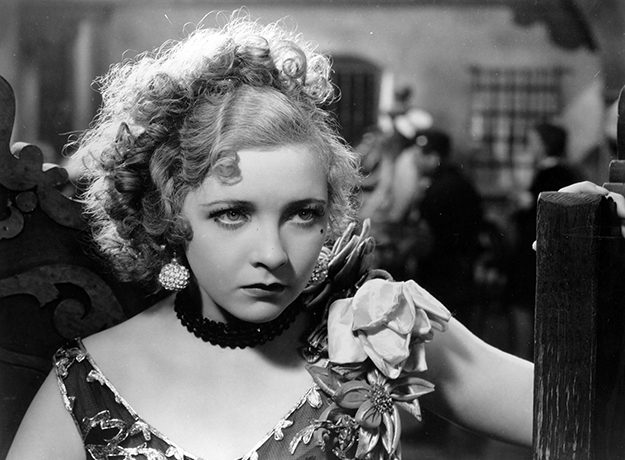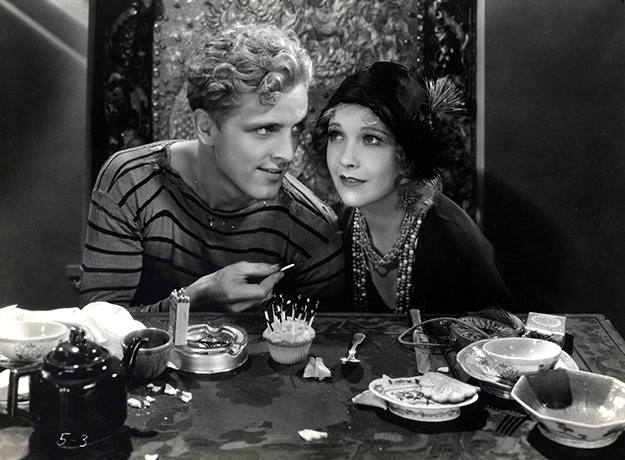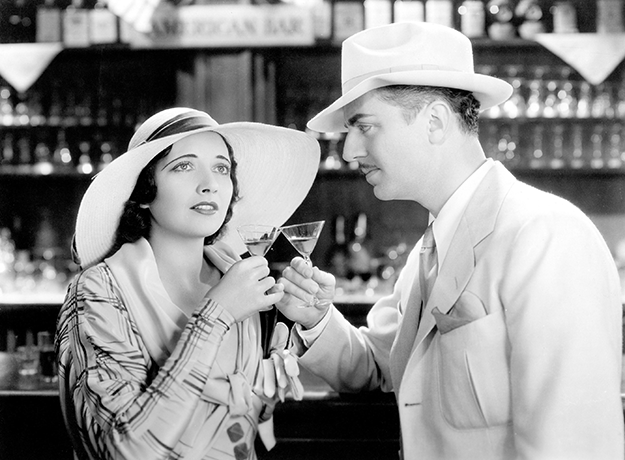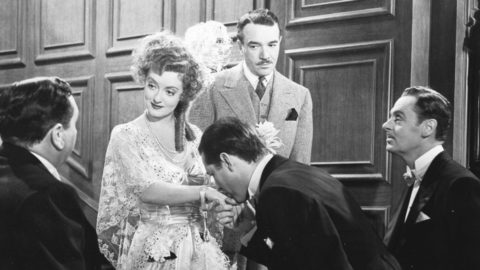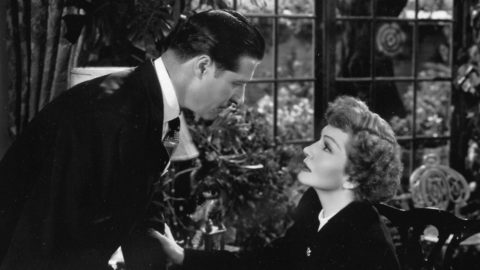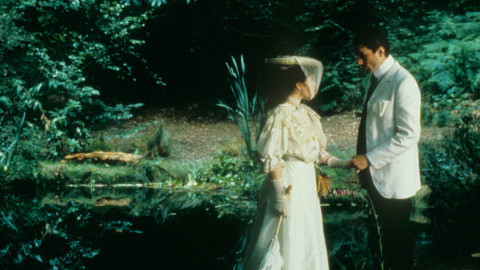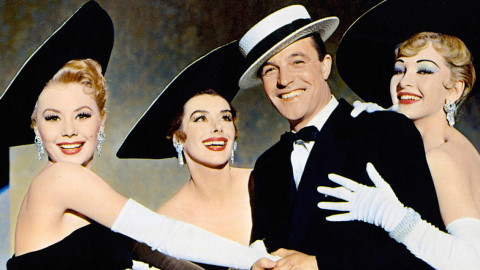Her Man (1930)
Her Man
Turn to director Tay Garnett’s raucous autobiography Light Your Torches and Pull Up Your Tights, and you will find several pages on Her Man, which he made in 1930. There’s an extended description of the movie’s running gag involving James Gleason and a slot machine; a funny story involving why Her Man stars Phillips Holmes and not Dean Jagger; an explanation of why process shots are necessary wherein Garnett also insists that the technical details are too complex for a layman (they’re not, but maybe Garnett was afraid of boring people); and a final anecdote about returning from location with a wisecracker who turned out to be Bob Hope.
What you will not find is anything about the film’s dazzling tracking shots through the dives of waterfront Havana, nor the swooping crane shots in the Thalia clip joint where most action takes place, nor any other quality that makes Her Man such an exhilarating discovery. Garnett seems to realize the movie is good, but not that it is “a forgotten masterwork,” as the Museum of Modern Art billed its pristine restoration during a recent run. Adjunct curator Dave Kehr is not given to hyperbole, so when he describes a film that way, you’d best find time to see it.
Her Man doesn’t have an especially promising hook—“Frankie and Johnnie,” the barroom ballad about a woman who finds her lover has been unfaithful and shoots him dead, a hoary plot even if you assume, as people often have, that Johnnie was Frankie’s pimp. Frankie (Helen Twelvetrees) works at a bar that’s owned and operated by Johnnie (Ricardo Cortez), who tickles the ivories when he isn’t quite literally stabbing folks in the back. Frankie is what used to be called a “B girl,” inducing men to buy too many drinks and lifting their wallets once they get woozy. Johnnie takes his cut while assuring Frankie of his devotion. Old souse Annie (Marjorie Rambeau) keeps a tender eye on the younger woman, but is too far gone to help much. Then, in wanders Dan (Phillips Holmes), a handsome sailor who, naturally, wants to take Frankie away all from this.
Her Man
With this old-hat scheme, Garnett and cinematographer Edward Snyder shape a movie that proclaims its originality from the first credits, written in wet sand and accompanied only by the sound of the surf washing up to erase each one. The opening finds Annie trying, and failing, to gain admission to an American port. She’s forced back, and as her ship returns to her island purgatory (unnamed, but obviously Cuba), Garnett points the camera at Annie’s feet: socks with stockings, run-down satin shoes, and teetering ankles. She’s a roundheel in more than name. Those feet acquire more muck as Annie shuffles down the gangplank and through a filthy street, until the camera moves up to encompass all of her while she makes her way through the vice district in a tracking shot that still floors audiences more than 80 years later. Every stage of it teems with life and debauchery. And, having set up this piece of his vocabulary, Garnett goes back to it more than once, to shadow Johnnie searching out his bit on the side (Thelma Todd, almost unrecognizable with raven hair), to follow Frankie as she looks for Annie, and late and most movingly, to trace Dan’s long walk to rescue Frankie once and for all.
While Garnett’s autobiography contains little of his working methods, it has a great deal of his boisterous personality, and so it seems does Her Man. Watching the film suggests the artists had a blast trying everything they could, like the camera following the waiter’s tray that holds Frankie’s drinks for her trick (“Two gins—one of ’em water”), and sticking with that tray all the way across the floor of the Thalia until the glasses meet the table. Garnett plays at withholding information, too. When Johnnie stages a fight, then uses the distraction to throw a knife dead into the back of a rival, Garnett refuses to let you see the knife hit its target. You’re forced to stick around with Johnnie and his weasel smile, until a hard-faced woman spots the corpse and screams. The one thing that gives away the movie’s era is the lack of overlapping dialogue—these lowlifes are mighty punctilious about letting each other finish a sentence.
Garnett clearly loves his cast, especially James Gleason and his sidekick (Harry Sweet, who died in 1933). The movie spends a lot of time following Gleason and Sweet’s drunken sailors as they try to steal a high-class bowler hat from Franklin Pangborn (who, for once, was not playing a sissy). Twelvetrees is famed for her ineffably sad eyes, but in Her Man’s close-ups she’s more childlike than anything else. Frankie’s hard-edged routine is just that. Garnett emphasizes that even more when his camera follows Frankie’s decidedly non-sexy walk; she toddles like a girl who’s trying out Mommy’s high heels. Holmes, who in other movies could be opaque, even a bit dull, grins and struts and projects real machismo. And Cortez is not merely a villain but a psychopath. The shot where Frankie, who is preparing to leave Johnnie, catches sight of her enraged lover’s reflection in the mirror she’s using, is chilling.
One Way Passage
Many of Garnett’s films mark him as an old-school romantic, none more so than his gorgeous One Way Passage (which also screened in MoMA’s brief series), about a shipboard love affair between a dying woman and a convicted murderer. But this brawling, sleazy pre-Code is also more romantic than it may seem, and it’s possible to miss how carefully Garnett weaves in tenderness, such as a spur-of-the-moment “birthday” celebration Dan gins up for Frankie, and a lovely, lingering shot of the couple’s childlike faces over a cupcake blazing with matchstick “candles.”
There is also Annie’s deep affection for Frankie, which opens and closes the movie. “I gotta have a job . . . I got a reason,” she tells the cops who are threatening her. Her motive for wanting to help Frankie is never spelled out, but the end circles back to a reminder, as Annie tells the bartender: “You know I had plenty of reason to wanta see Frankie get outta here.” Of all the effects in Her Man, the most unexpected may be the sly suggestion that this world of sailors, bargirls, pimps, and booze was all along a tale of mother love.
Farran Smith Nehme writes about classic film on her blog, Self-Styled Siren, and recently published her first novel, Missing Reels. She is a member of the New York Film Critics Circle.



